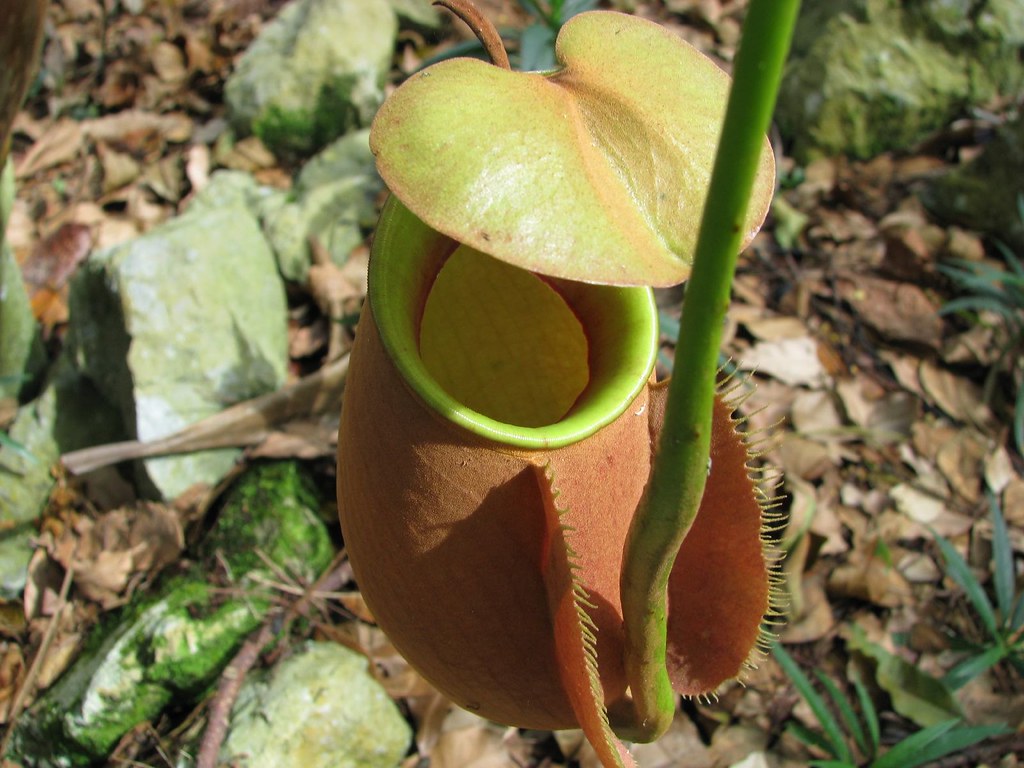Sundaland Heath Forests
The ecoregion’s land area is provided in units of 1,000 hectares. The conservation target is the Global Safety Net (GSN1) area for the given ecoregion. The protection level indicates the percentage of the GSN goal that is currently protected on a scale of 0-10. N/A means data is not available at this time.
Bioregion: Borneo Tropical Forests & Sundaland Heath Forests (IM16)
Realm: Indomalaya
Ecoregion Size (1000 ha):
7,672
Ecoregion ID:
281
Conservation Target:
50%
Protection Level:
2
States: Indonesia, Malaysia
Heath forests grow on extremely nutrient- poor, acidic, and sandy soils. In Borneo, these forests are known as Kerangas, a local Iban word meaning ‘infertile soils in which rice cannot grow’. Thus, these forests support a high diversity of carnivorous plants, including the pitcher plant, sundews, and bladderworts that derive their nutrients from animals, mostly insects that they trap. The pitcher plants are especially diverse in Borneo, with an estimated 39 species of Nepenthes.
Some of the larger pitcher plants have evolved a mutualistic relationship with tree shrews. The shrews sit on the pitchers to lick an exudate produced by the plant in such a position that their hindquarters are over the pitcher opening. The tree shrews mark ownership of the pitcher by defecating, and the feces that fall into the pitcher represent an important source of nitrogen for the plant.
_Tanjung_Puting_National_Park_-_Indonesia_2.jpg)
The flagship species of the Sundaland Heath Forests ecoregion is the Bornean white-bearded gibbon. Image credit: Creative Commons
The Sundaland Heath Forests ecoregion is made up of the forests growing on patches of white-sand soils on sandstone plateaus and ridges, and beaches raised from the seabed which have well-drained acidic soils that leach nutrients. The soils are traced back to raised sea beds during the mid-Pleistocene period.
The densely packed trees of the Kerangas have a low, dense, and single-layered canopy. Trees can grow to 20 m tall. Large trees are rare, and usually have a pole-like appearance with hardly any buttress roots. Epiphytes are common, adding upper-layer structural habitat complexity. Under favorable conditions Kerangas have many floral species found in lowland rainforest.
Dominant tree species in the upper canopy include Agathis borneensis, Ashtonia excelsa, Calophyllum sclerophyllum, C. ferrugineum, Casuarina spp., Cotylelobium burckii, Dipterocarpus borneensis, Madhuca curtisii, Hopea vaccinifolia, Koompassia malaccensis, Mangifera havilandii, Melanorrhoea beccarii, Memecylon laevigatum, Mezzettia leptopoda, Polyalthia glauca, Shorea ovata, S. scabrida, and Vatica coriaeea. Ground vegetation is sparse, primarily composed of the carnivorous plants, mosses, and liverworts.

Miller's langur. Image credit: Creative Commons
The fauna is also depauperate compared to the surrounding rainforests. The poor soils depress plant productivity, and many plants produce alkaloids against herbivory, including by insects. Thus, herbivorous primates, such as orangutans, gibbons, and langurs are less abundant in these forests. Because the low-nutrient acidic soils support few fruiting trees, the frugivorous birds are poorly represented in the Kerangas, and hornbills, pigeons, doves, and bulbuls are scarce, or even absent.
Even the insectivorous birds are less abundant. For example, woodpeckers such as the crimson-winged woodpecker, great slaty woodpecker, and buff-rumped woodpecker that are common in adjacent rainforests are either absent, or scarce, and attributed to the reduced availability of insects and very few large trees. However, the Kerangas do support some endangered birds, such as the crestless fireback, grey-breasted babbler and hook-billed bulbul. There is also a noticeable lack of other small vertebrates in the Kerangas; the reptile and amphibian faunas are highly depauperate compared to other Bornean forests. The lack of smaller prey species has implications for the higher predator populations as well.

Nepenthes. Image credit: Creative Commons
The Kerangas are not spared from intentionally set fires for commercial logging and agriculture. And once they are degraded or cleared, Kerangas develop into an open savanna of scattered trees, shrubs, sparse grasses and sedges known as padang, from which they take a long time to recover. Restoration of Kerangas through replanting has proved ineffective.
Thus, the recommended priority conservation actions are to: 1) stop any illegal logging and land clearing, especially in and around protected areas; 2) revoke any forest concessions in areas that are contiguous with protected areas or are important for landscape-scale conservation; and 3) expand the protected area system to include more of the remaining habitats in the ecoregion.
Citations
1. Brunig, E.F. 1974. Ecological Studies in the Kerangas Forests of Sarawak and Brunei, Borneo Literature Bureau for the Sarawak Forest Department, Kuching, Malaysia.
2. Newbery, D.M., Renshaw, E. and Brünig, E.F., 1986. Spatial pattern of trees in kerangas forest, Sarawak. Vegetatio, 65(2), pp.77-89.
3. MacKinnon, K., 1996. The ecology of Kalimantan (Vol. 3). Oxford University Press.



